

The latest edition of this work has been brought to publication with the generous assistance of Marguerite and Gerry Lenfest.
Naval Institute Press
291 Wood Road
Annapolis, MD 21402
2007 by Jim Lacey
All rights reserved. No part of this book may be reproduced or utilized in any form or by any means, electronic or mechanical, including photocopying and recording, or by any information storage and retrieval system, without permission in writing from the publisher.
ISBN 978-1-61251-434-5 (eBook)
The Library of Congress has cataloged the hardcover edition as follows:
Lacey, Jim, 1958
Takedown : the 3rd Infantry Divisions twenty-one day assault on Baghdad / James G. Lacey.
p. cm.
Includes index.
1. Iraq War, 2003 2. United States. Army. Infantry Division, 3rd. I. Title.
DS79.76.l325 2006
956.704434dc22
2006036392
 Print editions meet the requirements of ANSI/NISO z39.48-1992 (Permanence of Paper).
Print editions meet the requirements of ANSI/NISO z39.48-1992 (Permanence of Paper).
14 13 12 11 10 9 8 7 8 7 6 5 4 3 2 1
First printing
All maps courtesy of the Center for Army Lessons Learned at Fort Leavenworth.
All photos are from the authors personal collection and are available at the Military History Institute in Carlisle, Pennsylvania.
Contents
No book of this type can be written without the help and support of many others. First, I want to thank Brigadier General Anthony Cucolo, without whose support and indulgence this book would not have been written. I also want to thank my family and all the friends who were continuing sources of encouragement to finish it. I particularly want to thank Dr. Williamson Murray and Sharon Moore, who made several painstaking edits of the manuscript. If this book succeeds as a well-told narrative of the events of the Third Infantry Division during Operation Iraqi Freedom, they are the primary reason.
I also have to thank all of the officers and soldiers of the 3rd ID whose names the reader will find throughout this book. These great soldiers gave the gift of their precious time, without which this book would have been a much inferior product, assuming it could have been done at all. What the soldiers of the 3rd ID collectively accomplished should be ranked as one of the greatest military achievements of all time, and I only hope I can do it and them justice. For many of them, the retelling of their personal stories took a serious emotional effort; like countless silent heroes before them, many were initially reluctant to tell their stories. Most were convinced to do so only by my appeals that they owed an accurate history to their comrades in arms and the families of those soldiers who together sacrificed so much.
I want to apologize to all those whose stories I did not tell. Many times, I had to use the fight of a single platoon or company in order to present a detailed personal view of various combat actions. Usually, the unit selected was representative of fights that twenty or more other nearby platoons were fighting at the same time.
In putting this book together I had the full support of the 3rd ID chain of command that fought the war. Many of the quotes and remembrances in this book come from dozens of interviews and hundreds of hours spent talking with the soldiers and leaders of the division. Virtually every battalion commander and above in the divisions maneuver elements gave freely of their time to answer my questions and in some cases review the manuscript for grievous errors (though all responsibility for any error of fact that still remains rests solely with me).
This book benefited greatly from a unique project that was instituted even before the war ended. The Army instituted a massive lessons-learned effort, led by Brigadier General Mark ONeill and Mr. Greg Fontenot, to capture the events of the invasion. As part of this effort, the Operation Iraqi Freedom Study Group collected battle histories of every unit in the 3rd ID and conducted hundreds of interviews with participants in the invasion. These records and interviews were critical for me to develop a thorough understanding of confusing events and timelines. Much of this research has been published in Gregory Fontenots book On Point.
Many units sent me unofficial histories they compiled after the war. Moreover, I received dozens of personal reminiscences from soldiers, with detailed stories I did not see or read in any other source. One thing I greatly regret was not using the poignant stories sent by family members who waited at home as the minute-by-minute actions of their loved ones were beamed into their living rooms from embedded journalists. There is another major story to be told about what these families endured, but it will have to wait for another historian to take up the challenge.
By far my most important resource was a collection of videotapes made by the participants themselves. Less than two weeks after Baghdad fell, the 3rd ID commander had soldiers and leaders brought back to the sites of most of the events found in this book to tell their full stories directly on the ground where they had fought. Each of these descriptions was filmed. Taken together these sixty hours of tapes told almost the entire story of the invasion as it was seen by the direct participants. These narratives were told in the presence of others who had been present at each fight. So each story was corrected or clarified as it was told, and thereby much of the bias that so often finds its way into narratives written or told in isolation was removed.
Because they were told so soon after the end of the war, these stories were still fresh in the minds of the participants. Also, they had not been greatly enhanced by repeated retelling. In multiple phone conversations two years after the invasion, new story elements were introduced that did not appear in the persons early narrative of the event. Usually if I presented their earlier words, a more accurate memory of the event would be sparked, and that is what is in this history. In nearly every case where later versions disagreed with what was said earlier, I went with the earliest version.
The sheer volume of information I was able to obtain and the publishers space limitations forced me to prune many interesting details of this fight. For instance, I collected enough information on engineer and artillery units for separate histories of each of them, and anyone interested in undertaking the task will find electronic copies of all my research, including copies of the videos, at the Military History Institute at Carlisle, Pennsylvania.
I found only two books that dealt specifically with the 3rd IDs march to Baghdad. Both are superlative but narrow in scope.
Next page

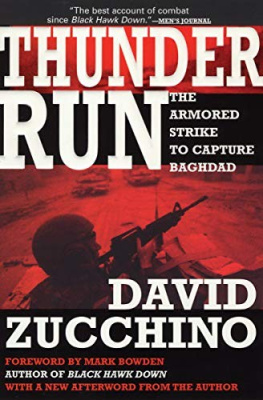
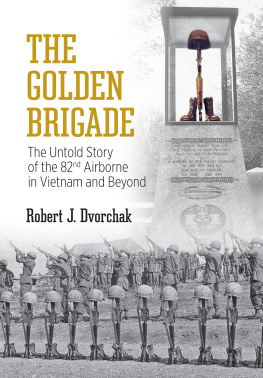
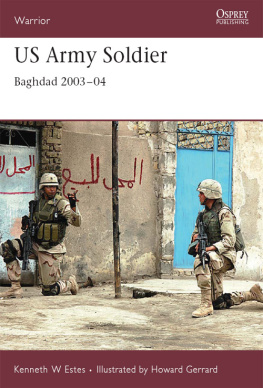

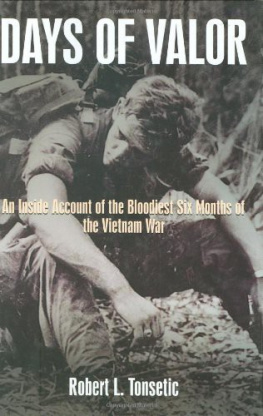
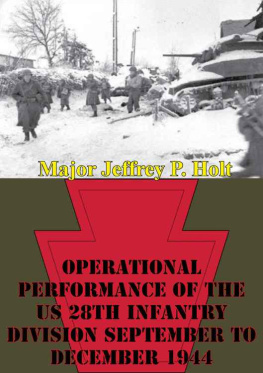



 Print editions meet the requirements of ANSI/NISO z39.48-1992 (Permanence of Paper).
Print editions meet the requirements of ANSI/NISO z39.48-1992 (Permanence of Paper).